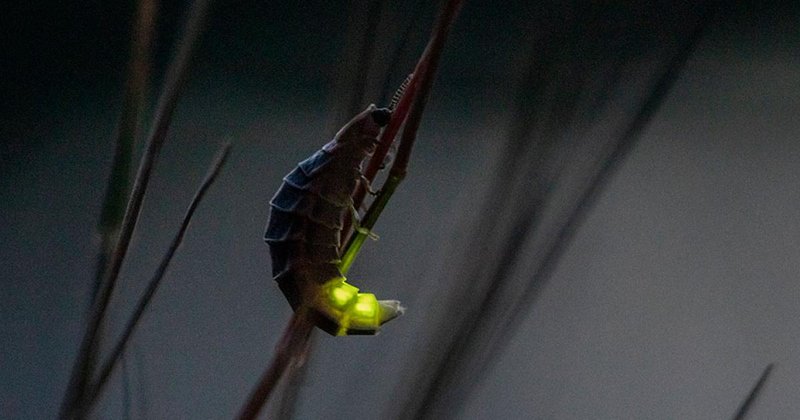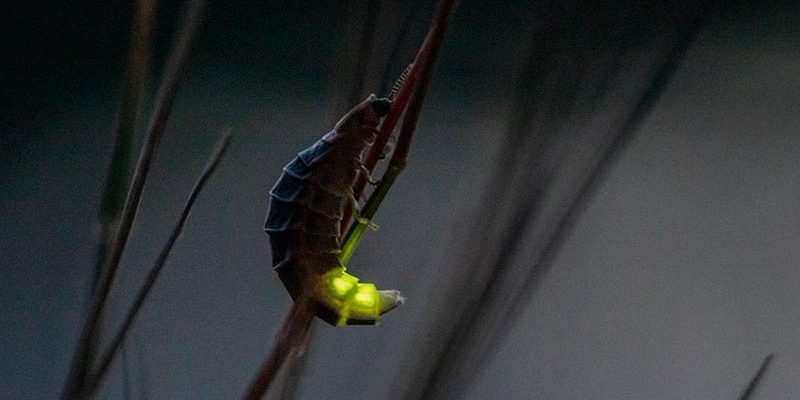
Light pollution is like a bright streetlight that stops you from enjoying a peaceful night sky. It’s caused by excessive artificial light—think city lights, billboards, and car headlights—that outshines the stars and makes it hard for us to see the natural beauty of the night. But light pollution doesn’t just affect our star-gazing; it’s also throwing glow worms off their game. Let’s dive into how this unseen enemy is impacting these fascinating creatures.
What Are Glow Worms and How Do They Glow?
Glow worms are the larvae of certain beetles, primarily belonging to the Lampyridae family. They are famous for their ability to produce light. You might picture them as little creatures with glowing behinds, but their glow is actually a complex chemical reaction involving a substance called luciferin. When they break down luciferin in the presence of oxygen, they emit light, which can be mesmerizing to watch in the dark.
You might wonder why they glow in the first place. The light serves two main purposes: attracting mates and luring prey. Glow worms create silk threads that catch unsuspecting insects, which then become dinner. This bioluminescent dance is essential for their survival and continuation of their species.
In short, glow worms’ light is the essence of who they are. But here’s the thing—when light pollution intrudes, that light loses its magic.
Understanding Light Pollution
Light pollution refers to the excessive or misdirected artificial light that brightens our night sky. This can come from various sources, including streetlights, homes, and commercial buildings. It disrupts natural ecosystems and alters our ability to observe celestial bodies.
To put it simply, light pollution is like wearing sunglasses at night; you can’t see the glow of glow worms, or the stars above for that matter. Urban areas are particularly hard hit, where bright lights create an environment that’s more luminous than the moonlit sky.
This disruption isn’t just an aesthetic concern; it has real implications for wildlife. Animals, including glow worms, rely on natural light cues for behaviors like feeding, mating, and navigation. When those cues are muddled by artificial bright lights, it’s like throwing them off course in a maze.
How Light Pollution Impacts Glow Worm Behavior
Light pollution can confuse glow worms in more ways than one. You might think those twinkling lights wouldn’t affect something that glows itself, but here’s the kicker: glow worms use darkness to their advantage. When artificial light invades their territory, it becomes harder for them to attract mates or catch prey.
For instance, in areas with high light pollution, glow worms tend to exhibit altered mating behaviors. Instead of glowing brightly to attract a partner, they may dim their lights. This lack of glowing can lead to fewer successful pairings and thus a decline in their population.
Furthermore, it disrupts their feeding patterns. Glow worms depend on the darkness to lure insects into their silk traps. When surrounded by bright lights, potential meals may avoid the area altogether, leading to starvation.
Effects on Glow Worm Populations
The ripple effects of light pollution extend beyond mere behavior; they can result in a decline in glow worm populations. Research indicates that areas with significant light pollution see fewer glowing larvae. This decline doesn’t just affect the glow worms themselves; it has consequences for the ecosystem.
For example, fewer glow worms mean fewer predators that rely on them as a food source, creating an imbalance in the food web. It can also affect the plants that depend on those ecosystems. Plants rely on healthy insect populations for pollination and other ecological functions.
If we continue to overlook light pollution, we might lose these stunning organisms forever. The glow from glow worms not only captivates our hearts but also plays a critical role in maintaining ecological health.
Minimizing Light Pollution for Glow Worms
While battling light pollution might seem like a daunting task, there are several steps we can take to help glow worms thrive. Here are some practical ways to minimize light pollution:
- Use Shielded Lighting: Install outdoor lights that direct light downward rather than into the sky. This reduces glare and prevents light from spilling into areas where it isn’t needed.
- Switch to Warm LED Lights: If upgrading your outdoor lighting, opt for warm-colored bulbs. These mimic the natural light spectrum better than harsh white lights, making it easier for glow worms to thrive.
- Limit Nighttime Activity: When possible, reduce the use of external lighting at night. This not only benefits glow worms but also allows us to enjoy a more beautiful starry sky.
- Community Awareness: Educate your community about the importance of light pollution. Engage in local efforts aimed at reducing unnecessary outdoor lighting.
Each small step can lead to significant changes. By being mindful of our lighting choices, we not only help glow worms but also improve our own experience of the night.
Light pollution might seem like an abstract problem, but its effects are very real, especially for creatures like glow worms. These tiny luminescent wonders are losing their habitat’s natural darkness, which is crucial for their survival.
By understanding how light pollution impacts glow worms, we can make informed decisions to protect not just them but the ecosystems they support. Every effort counts, whether it’s changing a light bulb or educating our neighbors about the importance of dark skies.
So next time you look up at the stars, remember the glow worms that may be struggling below. Let’s work together to keep their lights shining bright, for their sake and for ours.

